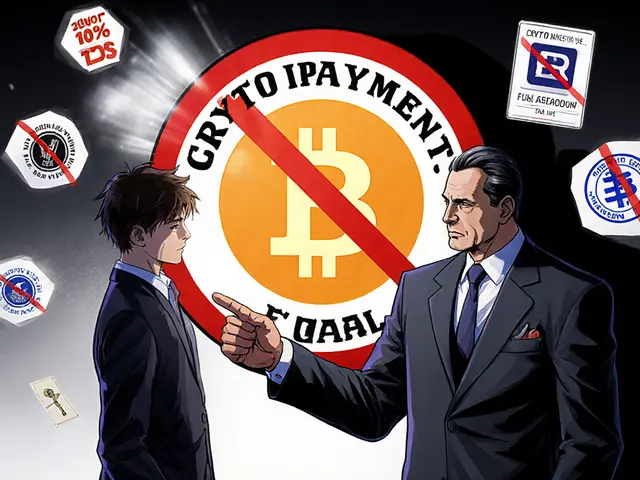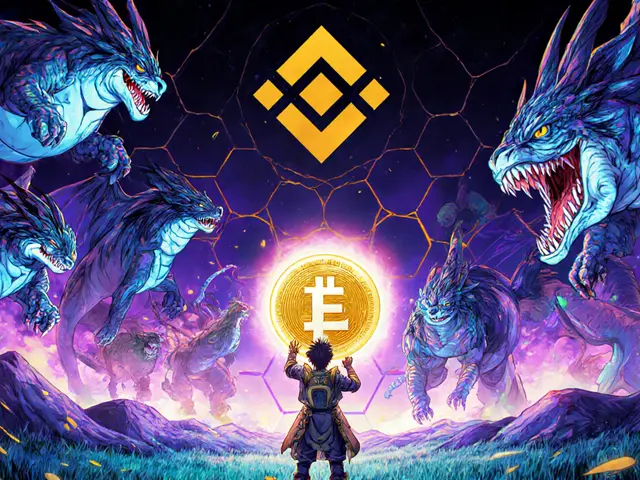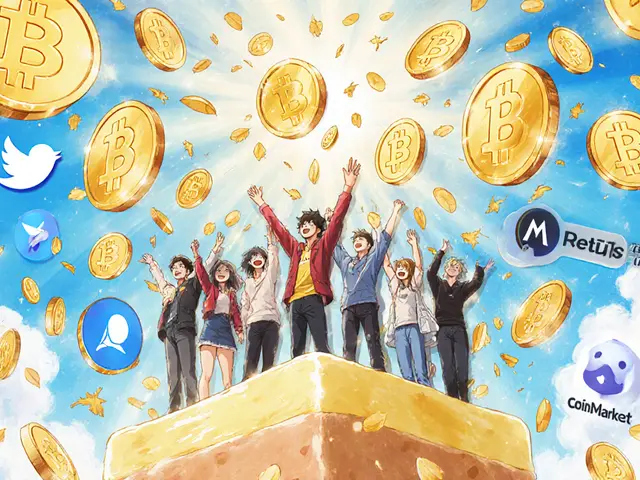Uniswap v4 vs v3 vs SushiSwap Feature Comparison
Compare Key Features
Select features to compare between Uniswap v4, v3, and SushiSwap:
Comparison Result
When people talk about the next‑generation decentralized exchange, Uniswap v4 (World Chain) is the name that instantly pops up. Launched on January302025, this fourth iteration upgrades the original 2018 protocol with a suite of developer‑centric tools, massive gas‑cost reductions, and true multi‑chain support, including the fast‑growing World Chain. If you’re wondering whether the hype matches reality, this review breaks down the tech, performance, security, and user experience so you can decide if it belongs in your DeFi toolbox.
Core Innovations That Set Uniswap v4 Apart
The most eye‑catching upgrade is the hooks system. Think of hooks as plug‑and‑play modules that sit inside a liquidity pool and can modify fee logic, rebalance assets, or trigger arbitrage automatically. Over 150 community‑built hooks are already live, covering everything from dynamic fee tiers that respond to volatility to automated liquidity provision strategies that chase short‑term yield.
Behind the scenes, singleton architecture consolidates every pool into a single smart contract. In Uniswap v3 each pool lived in its own contract, inflating deployment costs and crowding the blockchain with redundant code. The singleton approach slashes pool‑creation gas by an estimated 99%, making it affordable for anyone to launch a new market.
Finally, the flash accounting system leverages Ethereum’s EIP‑1153 transient storage. Instead of moving assets in‑and‑out of a pool after each swap, the system records only net balance changes, cutting additional gas and reducing state‑bloat.
Gas Savings and Performance Metrics
Gas efficiency isn’t just a buzzword; it directly translates to lower fees for traders and higher net returns for liquidity providers. Early data shows an average swap on Uniswap v4 costs roughly 45% less gas than the same trade on v3 when using the same fee tier. For high‑frequency traders, the savings compound quickly-some report up to a 70% reduction in daily gas spend.
From a volume standpoint, the protocol processed over $100billion in trading volume by July2025 and locked more than $1billion in total value locked (TVL). While v3 still commands about 60% of Uniswap’s overall trade flow, v4 captured roughly 30% within just six months, indicating rapid user migration.
Cross‑Chain Reach: World Chain, Wormhole, and ERC‑7683
Uniswap v4 isn’t confined to Ethereum. It’s live on eleven networks, and its presence on World Chain opens doors to a fast‑finality ecosystem that markets as a “next‑gen L1 for DeFi.” Through Wormhole bridges, assets like $SOL and HyperEVM’s $HYPE can be swapped on the same interface, eliminating the need for separate DEXes on each chain.
The integration of the ERC‑7683 standard further streamlines cross‑chain intents. By standardizing how contracts express cross‑chain actions, ERC‑7683 lets developers build truly multi‑chain applications that interact with Uniswap pools on Ethereum, Layer‑2s, and World Chain without custom adapters.

Developer Playground: Building Custom Hooks
If you’re a Solidity developer, Uniswap v4 feels like a sandbox with real‑world impact. The documentation provides a starter kit for creating a hook that, for example, raises the fee by 0.05% whenever the pool’s price moves more than 2% within a 10‑minute window. Such dynamic fees help protect liquidity during turbulent periods, a feature that traditional DEXes simply can’t offer.
Because hooks live inside the pool’s contract, they inherit the same security guarantees as the core protocol. The nine independent audits and a $15.5million bug bounty program give developers confidence that a well‑written hook won’t open a backdoor.
Liquidity Provider (LP) Perspective: Fees, TVL, and Risk
LPs now have a menu of fee structures instead of the static 0.30% (v2) or the three fixed tiers (v3). With hooks, you can set a base fee of 0.10% and attach a volatility‑responsive module that bumps the fee when price swings exceed a threshold. Early adopters report up to a 12% increase in APR compared to static‑fee pools, especially on volatile assets.
TVL on v4‑enabled pools grew to $1billion by mid‑2025, showing that capital is moving quickly. However, the flexibility comes with a learning curve-LPs must understand the hook’s logic, potential edge‑cases, and how it interacts with other pools. The community forums and official docs provide step‑by‑step guides, but newcomers should start with a modest allocation and monitor performance.
Security Track Record and Audits
Security is a non‑negotiable factor for any DeFi protocol. Uniswap v4 underwent nine independent audits, a public security competition that attracted over 200 participants, and a $15.5million bug bounty. To date, the protocol maintains a zero‑hack record, matching its v1‑v3 history. The singleton architecture reduces attack surface by having only one contract to audit, while the flash accounting system limits state changes that could be exploited.
That said, any custom hook adds new code paths. Security best practices recommend thorough unit testing, using the provided audit templates, and, when possible, running a third‑party audit before deploying a hook that handles significant capital.

How Uniswap v4 Stacks Up Against Competitors
| Feature | Uniswap v3 | Uniswap v4 | SushiSwap |
|---|---|---|---|
| Pool Architecture | Separate contract per pool | Singleton contract for all pools | Separate contracts |
| Fee Model | Fixed tiers (0.05%, 0.30%, 1%) | Unlimited, hook‑driven dynamic fees | Fixed 0.30% |
| Gas Cost (pool creation) | ~250,000gas | ~2,500gas (≈99% reduction) | ~260,000gas |
| Cross‑Chain Support | Limited (mostly Ethereum L2s) | 11 networks incl. World Chain via Wormhole | Ethereum + a few L2s |
| Customizability | Concentrated liquidity only | Hooks for custom AMM logic, fee, liquidity | Limited (Kashi lending modules) |
In short, Uniswap v4 outperforms v3 and SushiSwap on flexibility, gas efficiency, and multi‑chain reach. For traders who value low fees and developers who crave customization, v4 is the clear winner.
What to Expect Moving Forward
The roadmap shows continued modular growth. New hooks are being submitted weekly, and the community is already prototyping a “liquidity mining hook” that rewards LPs with governance tokens tied to pool performance. Integration with emerging Layer‑2s and other L1s (like zkSync) is slated for Q12026, further expanding the cross‑chain universe.
Regulatory pressure on DEXes is rising, but Uniswap’s decentralized governance model-driven by UNI token holders-offers resilience. The protocol’s design keeps control in the hands of the community rather than a single entity, a factor that may help it navigate future compliance challenges.
Frequently Asked Questions
Is Uniswap v4 compatible with the existing Uniswap v3 interface?
Yes. The web UI still shows the familiar swap and pool pages. Hook‑enabled pools are highlighted, and you can filter by “Dynamic Fee” to see the new options.
Do I need to move my liquidity from v3 to v4?
Liquidity migration is optional. You can keep existing v3 positions or redeposit into a v4 pool that uses a hook you prefer. The UI includes a one‑click migration tool for supported pools.
How do hooks affect gas fees for ordinary swaps?
Most hooks are designed to be cheap; they add only a few hundred gas on top of the base swap cost. The overall reduction from flash accounting and singleton architecture typically outweighs the extra hook overhead.
Can I create my own hook without writing Solidity?
Currently hooks must be written in Solidity because they run on‑chain. The project provides template contracts and a low‑code SDK that abstracts boilerplate, but some coding knowledge is still required.
Is the protocol safe on World Chain?
World Chain is a permissionless L1 that has undergone multiple third‑party audits. Uniswap’s deployment on World Chain follows the same audit standards as its Ethereum contracts, and the singleton design reduces the attack surface.
Overall, the Uniswap v4 review shows a protocol that finally gives developers the freedom they’ve asked for while delivering tangible cost savings for everyday traders. Whether you’re an LP hunting better yields, a dev building the next DeFi primitive, or a trader looking for cheap swaps across chains, Uniswap v4 on World Chain is now a serious contender in the DEX arena.







Katherine Sparks
September 23, 2025 AT 21:11I must commed the thoroughness of the review, it provides a clear picture of Uniswap v4’s advancements. The emphasis on gas reductions and cross‑chain capabilities is especially valuable for newcomers and seasoned traders alike. Your balanced analysis will undoubtedly help many decide whether to migrate their liquidity. Keep up the excellent work :)
Shaian Rawlins
October 2, 2025 AT 11:00The article really dives deep into the technical side of the new version and that is helpful for many readers. It starts by pointing out the main upgrade which is the hook system and explains why that matters. Then it moves on to the gas savings which are huge compared to v3. It also talks about the singleton contract design and how that changes pool deployment. The cross‑chain support is covered with details about World Chain and the Wormhole bridge. The author gives data on volume and TVL that shows rapid adoption. The section on developer tools explains how to build a custom hook in Solidity. It even mentions the low‑code SDK for those who are less experienced. The review includes security information about the audits and bug bounty. It warns users that custom hooks add extra risk and need testing. The piece ends with a roadmap and future expectations. Overall the structure is clear and each part builds on the previous one. The language is accessible while still being technical enough for serious DeFi enthusiasts. Readers can get a sense of both the big picture and the nitty‑gritty details. This balance makes the article useful for both newcomers and veterans. The conclusion reinforces why Uniswap v4 could become the leading DEX. Finally the FAQ section answers common questions in a succinct way.
Miranda Co
October 11, 2025 AT 00:50Listen, the new hooks are a game changer and you should pay attention. If you ignore them you’ll miss out on better fees and security. Get on board now.
Promise Usoh
October 19, 2025 AT 14:40Your extensive contemplation of the protocol’s implications invites a deeper reflection on the nature of decentralization itself. One might argue that the reduction of gas costs is not merely a technical improvement but a step toward greater accessibility, thereby democratizing financial participation. However, such progress also raises questions about the sustainability of security models when complexity increases. The balance between innovation and risk, as you have outlined, is a delicate equilibrium that demands continuous scrutiny. It is essential to consider whether the singleton architecture truly diminishes attack surfaces or merely concentrates them in a single point, a philosophical paradox worth pondering. Moreover, the cross‑chain bridges, while promising, could introduce vectors of vulnerability that transcend individual chains. In short, the evolution you described should be celebrated, yet approached with measured caution.
Rob Watts
October 28, 2025 AT 04:30Good point you got this right lets keep it simple and supportive
Bhagwat Sen
November 5, 2025 AT 18:20Uniswap v4 is obviously the only DEX that matters now, anyone still using SushiSwap is stuck in the past and missing out on real yields.
Cathy Ruff
November 14, 2025 AT 08:10lol v4 is overrated the fees are the same as v3 stop hyping it
mukesh chy
November 22, 2025 AT 22:00Oh sure, because the world of DeFi has never seen another upgrade before, right? Your statement is as original as a meme repost.
stephanie lauman
December 1, 2025 AT 11:50It is worth noting that the integration of World Chain may serve as a conduit for hidden surveillance mechanisms, potentially allowing covert entities to monitor transaction flows under the guise of cross‑chain interoperability.
Jim Griffiths
December 10, 2025 AT 01:40Use the built‑in analytics tools to track any unusual patterns in your swaps.